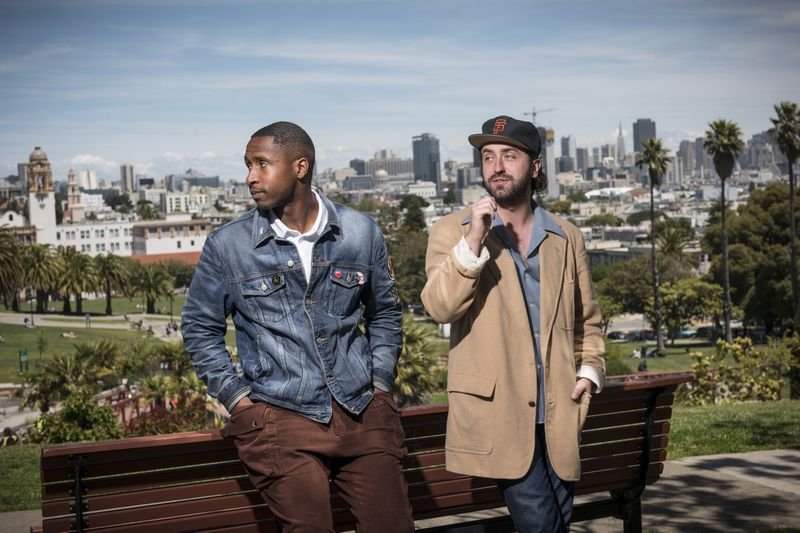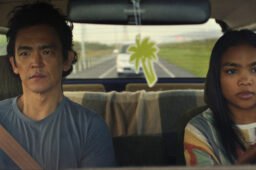
REVIEW: The Last Black Man in San Francisco
- June 30, 2019
- by
- Heather Moore
“Do you love San Francisco?”
“I don’t know. I mean I’m here.”
“You don’t get to hate it unless you love it.”
This exchange on public transportation encapsulates the ambivalence, love and longing in the recently released The Last Black Man in San Francisco. A semi-autobiographical film co-written by and starring Jimmie Fails follows a young black man in the city he loves but which no longer cares for him. As a third generation San Franciscan, Jimmie has a deep connection to the house that his family once owned in what is now a gentrified high-income neighborhood. The lore in his family is that his grandfather built the house in 1946 when the area was known as “The Harlem of the West.” Due to conflict and substance abuse, the family lost the house when Jimmie was a child. But Jimmie still loves it, still feels like it’s part of him, and still wants to own it and care for it.
The story explores Jimmie’s relationship to the house and within that the themes of belonging and ownership. Jimmie has had no choice but to live in nomadic patterns, bouncing between squatting with his father in abandoned houses, foster and group homes, until currently squeezed into a tiny room at his best friend Mont’s house (played stunningly by Jonathan Majors). Mont lives with his blind grandfather (Danny Glover in a wonderful performance) and they are welcoming but Jimmie still feels restless and uprooted. Jimmie and Mont visit the old family house frequently, until one day Jimmie realizes that it’s been vacated. The two friends hatch a plan for how to reclaim the house as their own.
What follows is an emotional window into loving something so deeply and yet not having the access to connect with it. You feel the pain and desperation of Jimmie’s longing to just be home and to just be connected with his family history, but the shifting demographics of the city prevent him at every turn. The reckless futility of trying to own what is now a $4 million home in a neighborhood that has erased its earlier culture. We watch Jimmie move through the city he loves even as the things that he loves about it vanish before his eyes. And so he winds up on a city bus, listening to young white women complain about San Francisco being “dead” even though they have no meaningful history with this place they love to hate.
And this is what Last Black Man revealed to me. How easy it is for most white Americans to choose to be anywhere we want. Like the young women on the bus who simply respond, “I don’t know, I mean I’m here.” We pick up and move in and own, careless of the history of a place and the people whose lives and stories have been tied to it for longer than we care to acknowledge. We take for granted what it means to be “here” and what it may cost the people we displace. As the real life Jimmie said in an interview with The Nod,
“They don’t see you, they don’t see the people who are from here and have fought for this place their whole lives. How are you going to move in here and not see us? We’ve been here. We’re not tech millionaires but we still deserve to live here.”
Surrounding my viewing of the film I was also listening to a new podcast, This Land. It is about the Cherokee tribal lands in Oklahoma and a court case that will decide what happens to 180 years of land ownership and shared history. Not unlike Jimmie, this tribe no longer lives where they once had their strongest sense of belonging. The Cherokee are not even from Oklahoma, they were originally displaced there from their ancestral land in Georgia. They were “allowed” to live somewhere until the land became more valuable than they were to the surrounding white settlers. So they would be moved to less desirable land, until that land became valuable, and that land would be swindled away from them, etc. For generations our society has treated people like they are disposable. As soon as they get in the way of financial gain, they are removed and replaced. Chased from state to state, neighborhood to neighborhood, always less valuable than the space they occupy.
So this is the question of these two accounts. What does it mean to own the place where we belong? To have an indelible imprint that reflects who we are and commemorates our presence there? Throughout the Old Testament we see a pervasive picture of how much God loves the land and created His people to be deeply connected to it. The land of Israel was God’s gift to His people, it was part of who they were and part of what it meant to be God’s covenant people. The land was in their bones, it was their place of belonging. God even designed an economic system so that if someone fell on hard times and had to sell their ancestral land, there was a buyer’s expiration date to insure that it would be returned to their children (Lev. 25). There was no generational poverty, everyone had a guarantee of their place in the world. Then in the New Testament Jesus expands that to say “The meek shall inherit the earth.” No longer is God’s inheritance just for one country and one people group, it is now for every faithful person. This is a pictured of redeemed ownership. Not one that subsists on exploitation and greed, but on seeing all things as a gift. A gift that is not ours to take from someone else. A gift that is from God alone to be stewarded with gratitude and care. The gift of mutual belonging to something good.
You should go see The Last Black Man in San Francisco. It is beautiful and unique and emotional and indicting. It is good art that tells a powerful story (Jimmie Fails and Jonathan Major both deserve Oscar nominations for their performances.) Go see the movie and then go see the people that live around you. Hear their stories. Fight for and with them to preserve that which is good and right. Rejoice over their inherent worth and rejoice that we get to share this beautiful world together.






